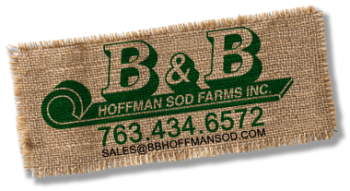With news that the University of North Carolina is choosing to go back to natural grass for their football field, it’s a great time to talk about making the choice between natural grass and artificial turf. Choosing between natural grass and plastic grass can be tough, but when you consider the long-term benefits, natural grass clearly comes out on top. From its aesthetic appeal to its environmental impact and health benefits, B&B Hoffman Sod would like to share why natural grass is the smarter choice.
Authentic Beauty and Feel
Call us biased, but real grass offers a vibrant, dynamic look that artificial turf just can’t replicate. Natural grass changes with the seasons, giving your lawn a rich texture, color, and fragrance. Plastic turf may stay green year-round, but it lacks the organic beauty of a living lawn.
 Safer for Sports and Play
Safer for Sports and Play
Natural grass is a safer surface for outdoor activities, especially for children and athletes. Grass provides a softer, more forgiving surface compared to artificial turf, which can get extremely hot in the summer and cause burns or injuries. Natural grass is shock-absorbing, reducing the risk of sprains and abrasions, making it ideal for sports fields and play areas.
Cost-Effective and Easy to Maintain
While synthetic grass has a high upfront cost, natural grass proves to be more cost-effective over time. It requires less maintenance, and you won’t need to replace it every decade like plastic grass. With proper care, natural grass lasts for years, providing excellent value without the ongoing upkeep costs associated with plastic turf.
Damage to natural grass is simple to fix—whether reseeding or laying down new sod, repairs are quick and affordable. Artificial turf requires costly replacements for damaged sections, making maintenance more expensive in the long run.
Healthier for the Environment and Your Family
Natural grass supports the environment and improves air quality by absorbing carbon dioxide, releasing oxygen, and promoting healthy soil. Grass also reduces water runoff and prevents erosion. Plastic turf, however, can trap heat and retain harmful chemicals, posing potential health risks to pets and children. Natural grass promotes a healthier, more breathable environment for everyone.
Speaking of the environment, natural grass supports local wildlife, including pollinators like bees and butterflies. Artificial turf does nothing for biodiversity and can create a sterile, lifeless environment. If you want to encourage a healthy ecosystem, real grass is the better choice.
When it comes to the overall value, environmental benefits, and safety for play, natural grass is the clear winner. From its authentic beauty to its ability to support sports and outdoor activities, it offers far more than synthetic turf. Whether you’re looking to replace your old lawn or create a beautiful, green outdoor space with our premium Kentucky Blue Grass for your family or business, B&B Hoffman Sod is here to help you every step of the way. Call us at (763) 434-6572 or visit our website to get your green space healthy, safe, and chemical-free for years to come!


